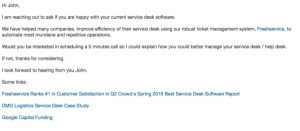E-commerce shows no signs of abating, as studies show that the size of the online retail space in the United States is expected to grow from around 167 billion in 2010 to as much as 490 billion by 2018. One of the key advantages that online commerce offers is scale. Unlike traditional retail that is limited in scope to the neighborhood it operates in, online retail stores often operate on a national or even international scale. It is hence not uncommon to read about E-commerce companies that have grown a hundred percent or more year-on-year.
Growth at such exponential rates often comes with its own set of challenges, and chief among them is the ability to seamlessly scale up. Growing a store from a Gross Merchandise Value (GMV) of $ 100,000 to a million is not simply about procuring and shipping more products. This also requires a rapid evolution in the supply chain, distribution and demand forecasting models. It may not be realistic to invest in new distribution centers based on just a few months of sales data. Nor would it be possible to chart out precise demand forecasting models with insufficient sales history.
Under such circumstances, it is always a good idea to invest in cloud and on-demand systems that can sustainably scale up or down based on business requirements. Here are a few areas to focus on:
Backend Infrastructure: Scaling up the technology infrastructure of a business can be quite stressful when you are going from a dozen orders a month to thousands per day. There are two areas to focus on here – the core hosting technology that needs to hold up with an increasing traffic load, and an ecommerce platform that is sophisticated enough to handle multiple transactions in parallel. Services like AWS enable seamless scaling of computing solutions, and are recommended for online commerce businesses looking to scale up rapidly.
Supply Chain: The success or failure of an ecommerce business depends completely on how robust the supply chain is. Again, there are two components to this – the technology front-end and the physical infrastructure back-end. ERP providers often have dedicated solutions to serve the online retail channel. For instance, the eCommerce ERP product from NetSuite goes beyond supply chain management to other aspects of front-end site management. Distribution channels like ShipWire make it possible for ecommerce stores to open new distribution centers on-demand and scale them as orders increase. With businesses now able to cater to new markets without locking up crucial capital in infrastructure investments, returns on investments are quicker, cash flow is smoother and scaling up becomes seamless.
Demand Forecasting: A study published by the Symbiosis Institute of Management Studies points out that demand forecasting is one of the key inventory management challenges faced by online retailers. Large businesses often deploy sophisticated software tools to help them with their demand forecasting requirements. Cloud computing has democratized the business landscape, and today such solutions are available for startups and small-scale businesses as well. An example is the purchase prediction tool provided by Google that enables businesses to perform buyer behavior forecasting on the fly.
Technology has made it extremely easy for retailers to scale their businesses rapidly on-demand. The affordability of these solutions has also made it possible for even the smallest competitors to benefit from these solutions. The onus now lies with business owners to adapt, lest they be overtaken by competition in this rapidly evolving ecosystem.
Digital & Social Articles on Business 2 Community(132)
Report Post





